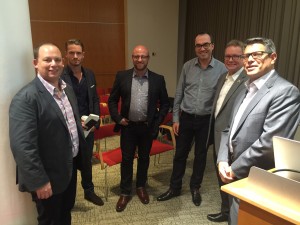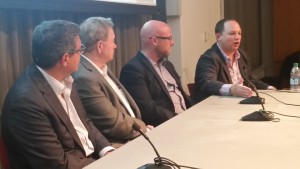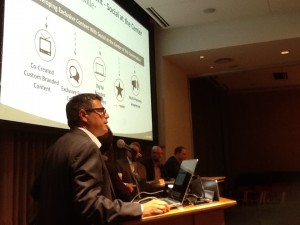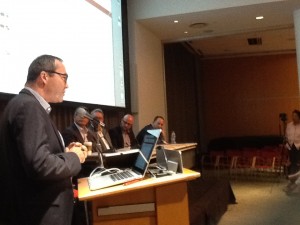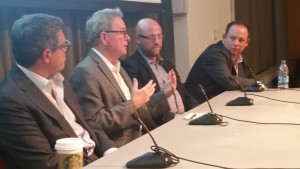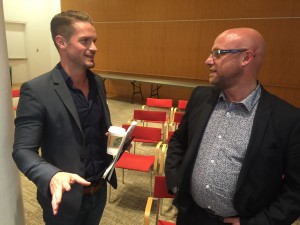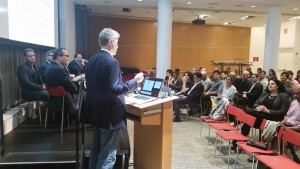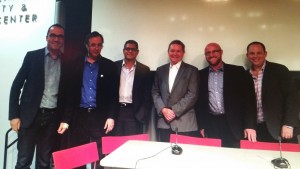The AmCham Finland Open House on Friday, October 2nd, celebrated the 1st anniversary of the organization in New York. But, in every way, it celebrated the growing presence of Finnish entrepreneurs and business owners in New York. And, in one sense, it was somewhat of a homecoming.
The homecoming was evident when Poju Zabludowicz, head of the Tamares Group, which owns 1500 Broadway, the new home of AmCham Finland, appeared to give his best wishes to Erika Sauer, the head of AmCham Finland New York. A Finnish-born real estate magnate, Zabludowicz symbolizes the ultimate height of business success for someone born in a country of slightly more than 5 million people. But, as with its neighbor to the south, Estonia, Finland punches well above its weight in the business world.
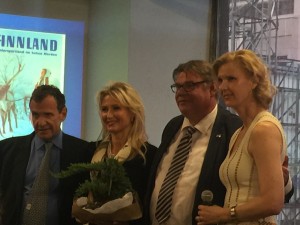
Pujo Zabludowicz; Erika Sauer; Timo Soini, and Kristiina Helenius at the AmCham Finland New York Open House
The event was held in a raw space down the hall from where AmCham Finland New York will take an office, in a co-working space. But the space was the ultimate New York party scene, with partitions, dry wall, and bare floors, all with stunning north Times Square views. At the tail end of UN Week, the event was significant for the presence of Kai Sauer, the ambassador of the permanent mission of Finland to the UN, as well as the new foreign minister of Finland, Mr. Timo Soini. Soini read prepared remarks that underscored the significance of the U.S. market to Finland, now more than ever.
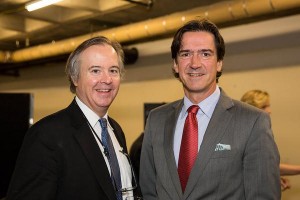
Chris Pfaff and Kai Sauer, Finland’s UN ambassador
Kristiina Helenius, the president of AmCham Finland, thanked the more than 75 people who attended, many of whom had braved strong winds and rain to make the event, and pointed out the success of the Launchpad USA program, which is opening doors for Finnish (and Estonian) ventures. Helenius had presided over a Nordic Investor Summit in New York in May; at least half of the presenting companies have already established offices in the U.S.
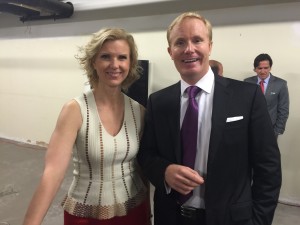
Kristiina Helenius, president of AmCham Finland, and Toni Toikka, CEO of Alekstra
It was an open house (avoimien oven päivä), but somewhat of a door-opener as well. At least four Finnish ventures were present at the event, all of whom had recently set up offices in New York. This is a tipping point for the Finnish venture scene; even a year ago, few if any Finnish ventures were making commitments to expand to New York – or the U.S for that matter – but the strategic vision of venture capital funds such as Inventure and Vision+ has pushed more Finns to settle in the world’s largest market and, more importantly, its largest city.
One can expect more Finnish ventures to land in the New York market, and there is every reason to believe that AmCham Finland will be part of this trend. Onnea, Suomi!
